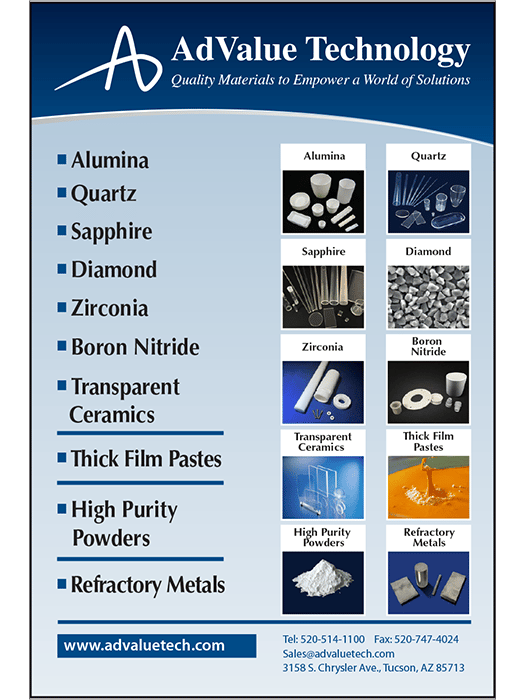industry perspectives
Brian Sjogren
Guest columnist
By Ender Suvacı and Servet Kızılırmak
Guest columnists
Medical ultrasound applications of piezoceramics and recent trends
The medical ultrasound industry has seen significant advancements driven largely by the development and application of ceramic materials. These materials, particularly piezoceramics, play a crucial role in device functionality.1,2
Piezoelectric materials convert electrical signals into mechanical vibrations, generating ultrasound waves that penetrate the body and reflect off internal structures. The returning echoes are then converted back into electrical signals to create detailed images. This dual capability makes piezoceramics ideal for ultrasound transducers, which are the components responsible for generating and/or sensing ultrasound energy in ultrasound machines (Figure 1).

Figure 1. There are many uses of ultrasound imaging in healthcare, including diagnosing injuries to tendons, ligaments, and muscles.
Credit: iStock
Several recent trends in the ultrasound industry include
- Portable and handheld ultrasound devices, which are enabled by the development of smaller, more efficient ceramic transducers.
- Expanded use of high-frequency ultrasound devices, which rely on advanced piezoceramics that can operate at higher frequencies.
- Adoption of 3D and 4D imaging techniques, which produce real-time, high-resolution images through the use of piezoceramic materials.
- Development of high-intensity focused ultrasound, an emerging noninvasive therapeutic technique that uses piezoceramic materials to generate focused ultrasound waves to target and destroy diseased tissue without damaging healthy tissue.
However, likely the biggest trend is the shift toward lead-free piezoceramics.
Shift from lead-based to lead-free piezoceramics
Lead-based piezoceramics, such as lead zirconate titanate (PZT), traditionally have been the material of choice for piezoelectric applications due to their excellent piezoelectric properties. However, with the global push toward sustainable and eco-friendly technologies, a spotlight has been shown on the environmental and health risks associated with lead. Moreover, many countries are implementing stricter regulations on the use of hazardous substances.
As a result of these societal and market forces, manufacturers are exploring the adoption of lead-free alternatives to traditional PZT materials, such as bismuth sodium titanate, potassium sodium niobate, and bismuth ferrite.3,4 Texturing techniques such as templated grain growth have been developed to enhance the piezoelectric properties of lead-free ceramics, making them more competitive with traditional PZT materials.5
Consequently, the global market for lead-free piezoelectric ceramics is expected to rise from $184.1 million in 2021 to $402.1 million by 2026.6
Industry adoption and outlook
The shift to lead-free piezoceramics presents challenges, such as the need for new manufacturing processes and potential cost implications. Overcoming these challenges will require a collaborative effort by powder manufacturers, ceramic manufacturers, and ultrasound designers and manufacturers.
An example of such activities is the Life Med-U Project.7 This project, which is funded by the European Union through the Horizon Europe @Eureka Eurostars Program, involves innovative powder designer and manufacturer Entekno Materials (Eskişehir, Turkey) working to develop lead-free medical ultrasound devices with partners CTS Denmark/Ferroperm (ceramic manufacturing), Vermon (medical ultrasound imaging), and Precision Acoustics (high-intensity focused ultrasound).
The medical ultrasound industry is at a pivotal point, with significant advancements in ceramic materials driving innovation and improving diagnostic capabilities. As the industry continues to evolve, we can expect further improvements in the performance and availability of lead-free piezoceramic materials, ultimately enhancing the quality and safety of medical ultrasound technology.
About the authors:
Ender Suvacı is professor of materials science at Eskişehir Technical University in Turkey and founder and chief technology and innovation officer at Entekno Materials Corp. (Eskişehir, Turkey). Servet Kızılırmak is sales manager at Entekno. Contact Suvacı and Kızılırmak.
